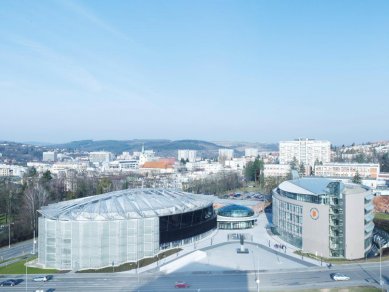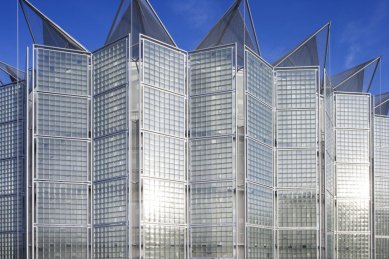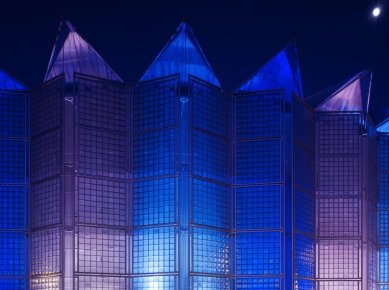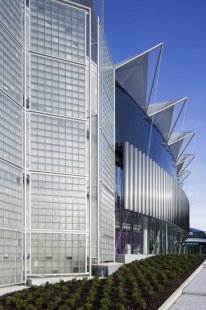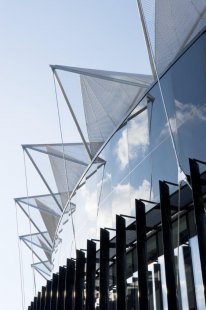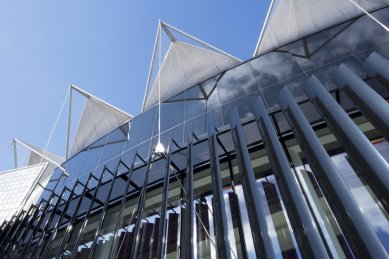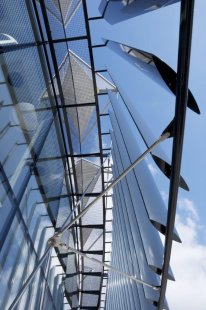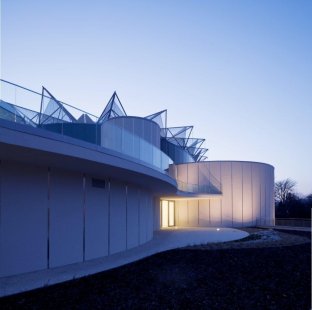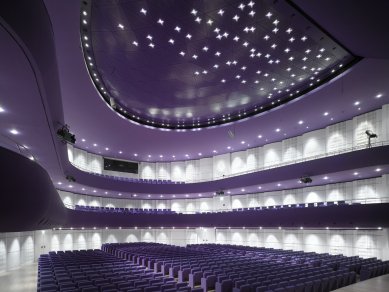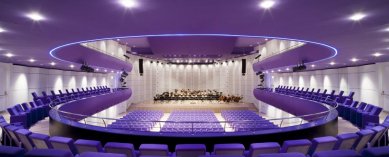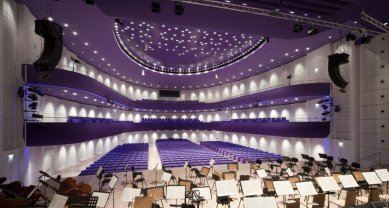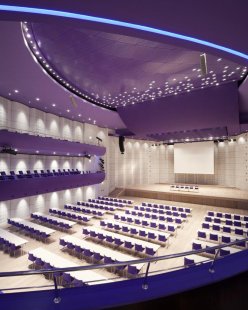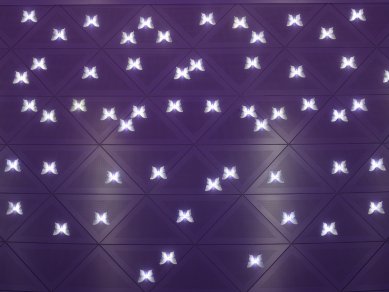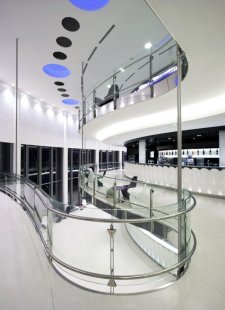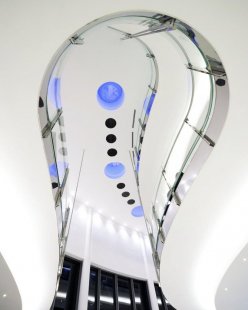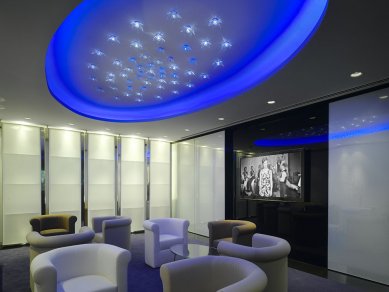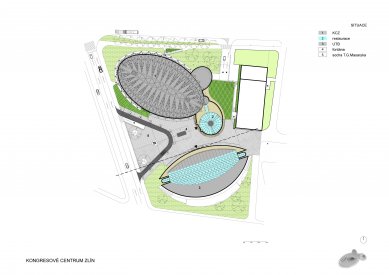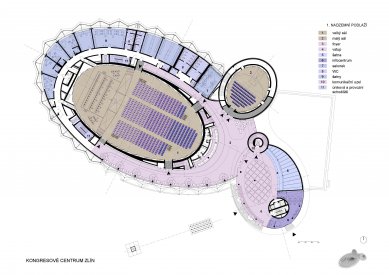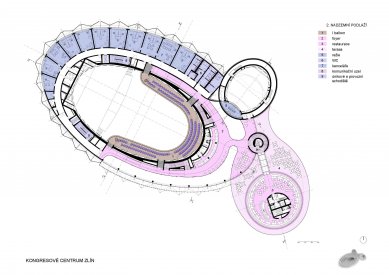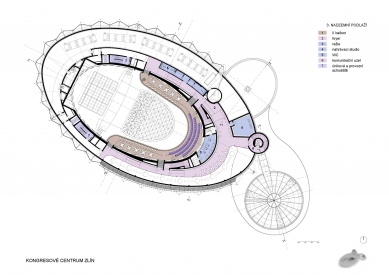
Congress Center Zlin

 |
The founder of the town was very keen on culture and education, hence adult ‘schools’ were situated in the very centre of the town, a few steps away from the main factories, becoming an integral part of the city concept and their configuration forming the famous ‘U’ (two rectangular buildings meeting in an angle) creating a public space with a statue of the first Czechoslovakian President. Although the original school buildings collapsed about 15 years ago, a condition for the new development of this site was to maintain this urban concept.
The site for the Congress Centre serves multiple functions: a concert hall, conference centre with projection, home for the administration of the Philharmonic Orchestra, the Centre’s own offices, rehearsal and recording studios, exhibition spaces, and bars. The main hall accommodates 850 seats, and approx 50 standing. The Conference Centre caters for roughly the same amount. Balls and other functions can take care of up to eleven hundred persons.
Since the building is situated close to a major intersection, the main auditorium had to be fully isolated from all external noise, vibration etc. Also, for operational reasons, a circulation zone around the auditorium was a strict requirement. With this concept, the oval central space is surrounded by offices, rehearsal rooms etc., all in need of natural ventilation and daylight. Another external layer was required as extra sound insulation, sun protection and visual effect.
The urban space, in the form of a ‘V’ opens on to the town centre and the incoming visitors proceed to the entrances situated close to the sharp part of the ‘V’. There is also an entrance to a glazed connecting ‘bubble’, a public restaurant shared by both organisations. Approaching from the town and main intersection the first visual is the glass brick ‘pallisade’ which absorbs the initial impact of noise and climatic conditions and unifies aesthetically the building whilst also allowing the daylight through. It can be backlit at night and is easy to maintain. At the point where the entrance and three storey foyer begins, the external envelope ends and opens the view into the interior of the building with plants, bars and exhibition spaces. The external area is enriched by a water fountain with changing coloured lights.
Since the town is located in a valley and the centre is at the very bottom of it, the roofs are a very important element of the architectural solution. They are being looked at from a substantial part of the other development. The elliptical roof of the auditorium looks like a seamless efficient concrete shell, but contains all the service penetrations, smoke outlets etc, and air-conditioning plant, which does not present the most exciting view. For this reason the external envelope is interconnected with the roof by a perforated metal skin, supported by two large tubes with fins tensioned by vertical cables, also stabilising the external envelope of shading of foyer facade.
A great deal of attention had to be given to the inside of the concert hall. An elliptical space is not a good shape acoustically to begin with, therefore convex louvred cast white concrete panels were proposed, which proved a very effective solution. Because of the flexible demands of the space, the seats have been designed in such a way that they can be pushed under the podium and totally free up the central space for other functions. The only luxury was the choice of colours for the seats, and a ‘flutter’ of glass butterflies across the acoustic ceiling.
0 comments
add comment


